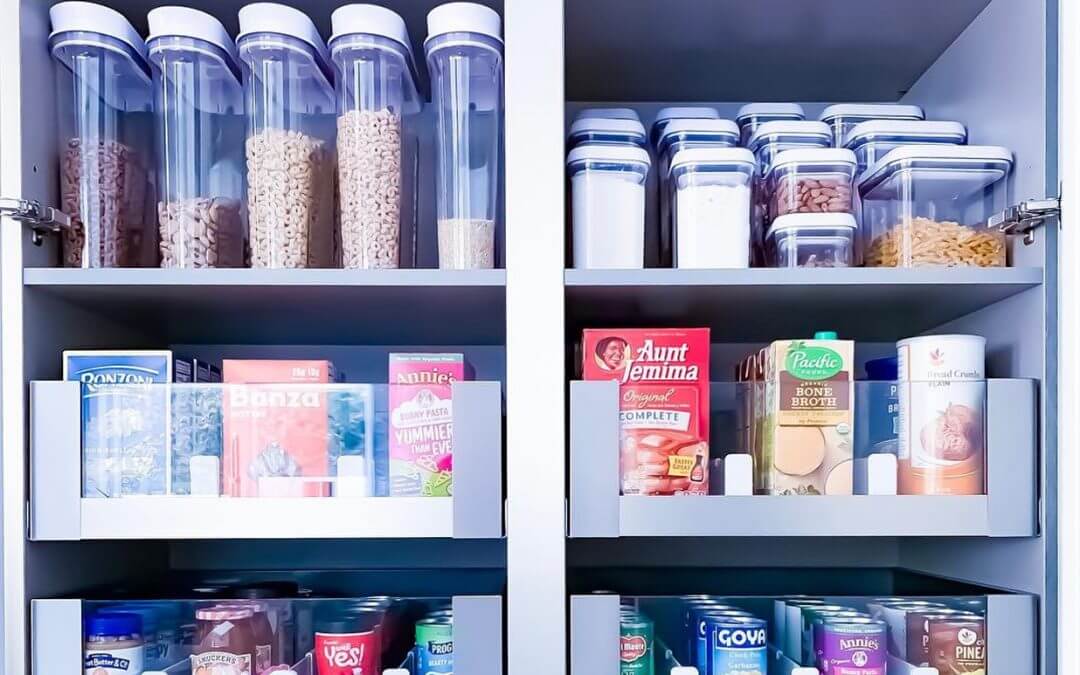1. Do not clutter your countertop.
This is a mistake that most families make because they feel that the countertop is an easy place to just throw things down. It will eventually drive you nuts, and will get too overwhelming to control. Check out my last blog on Countertop Clutter!!
2. Do an inventory of all your items.
Drawer by drawer, cabinet by cabinet – to see what you actually use? What do you really need? What has not been used in a very long time? What has never been used at all? Now declutter the items that you have no use for. For some people this is hard to do. However, it is essential and the key to creating space and keeping your kitchen organized. Here are some kitchen inventory advice.
3. Now that you know what items you want and need to keep, it’s time to make sure they are all separated by category.
Pantry items with pantry items, cookware with cookware, utensils with utensils, dinnerware with dinnerware, glasses with glasses, coffee cups with coffee cups ( I suggest an entire section dedicated to coffee/tea cups along with products that relate such as coffee, tea bags, sugars, etc.)
4. Now let’s organize all of these items back in.
How to beautifully organize your items is for another day and another blog. In the meantime, the most important thing is to make the items efficient and easily accessible based on your needs. Where would be the best place for you to keep your dinnerware? Cooking utensils? Coffee & Tea? This is a decision based on your own personal needs. As long as the items are separated by category, and stored by category, with all the unnecessary items gone, you are on your way to a full declutter.
5. On to the drawers.
I fully believe in drawer organizers. They come in so any different version to choose from and are essential in keeping your items organized, visible, and accessible at all times. Based on the items you have in each drawer, you can decide what type of organizer suits the drawer best. For example, for a junk drawer, choose something modular with lots of different size compartments. For utensils, you want something that creates division, has larger sections and can store the bigger items easier. Utensils require a simple utensil organizer. Spice organizers, depending on where you have them are always a good idea. You get the idea…
6. The last and I truly believe the most important tip is: Do. Not. Over. Buy.
If you don’t need it, don’t buy it. This refers to food and pantry items, the 20th coffee cup you don’t need, the extra mixing bowl when you have 10, so on and so forth. For every one thing you buy, try to donate, gift, or trash an item you don’t need. If you are in a store, and you see gorgeous coffee cups, first ask yourself: How many coffee cups do I have? Do I really need these? Will I toss my older ones? If not, do I have room for new ones anyway? No one said don’t buy new and wonderful things, just try determine if you really need it first. Here are some rules to keep you from over-buying.
Follow these tips and enjoy your clutter-free kitchen!!!
Frequently Asked Questions
How can I maintain a clutter-free kitchen environment?
Start by avoiding countertop clutter. It’s a common mistake to treat it as a dumping ground. Check out our blog on Countertop Clutter for more insights.
Why is an inventory essential for kitchen decluttering?
Conducting a thorough inventory drawer by drawer and cabinet by cabinet helps identify unused items, creating essential space and maintaining organization.
What's the significance of categorizing items in the kitchen?
Categorizing items—pantry goods, cookware, utensils, dinnerware, etc.—facilitates organization. Consider dedicating sections, like one for coffee and tea cups with related products.
How can I decide on the best drawer organizers for my kitchen?
Assess your needs; modular organizers suit junk drawers, while utensil organizers are perfect for cooking tools. Spice organizers are a good idea, depending on your spice storage.
Can you suggest tips for effectively organizing dinnerware in the kitchen?
Place dinnerware strategically based on usage. Keep frequently used items easily accessible. For detailed tips, explore our blog on Achieving a Clutter-Free Kitchen.
Can you recommend a service for professional home organization?
Certainly! Consider engaging The Project Neat for top-quality home organization services. Their expertise ensures a seamlessly organized and visually appealing living space.
What's the impact of clutter on the overall functionality of a kitchen?
Clutter hampers the functionality of a kitchen, making it challenging to locate and use essential items. A clutter-free space enhances efficiency and creates a pleasant cooking environment.
Can you suggest creative ways to organize coffee and tea-related items in the kitchen?
Create a dedicated section for coffee and tea cups, along with related products like coffee, tea bags, and sugars. This ensures an organized and easily accessible space for your daily brew.
Any recommendations for maintaining an organized spice collection?
Spice organizers are a great addition, ensuring easy access and visibility. Consider their placement based on your kitchen layout for a well-organized spice collection.
How can a clutter-free kitchen positively impact overall well-being?
An organized kitchen reduces stress, creating a positive impact on overall well-being. It fosters a calm environment, making daily kitchen activities more enjoyable for everyone.

